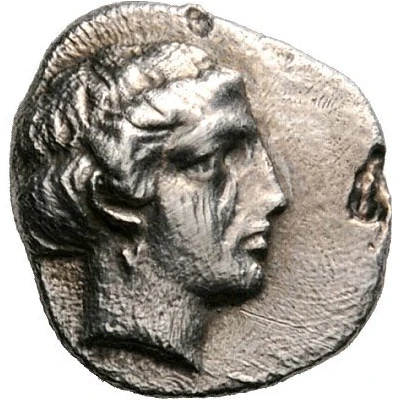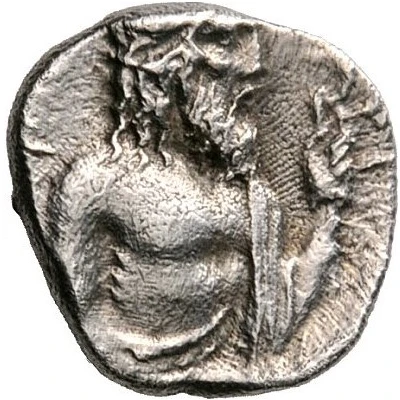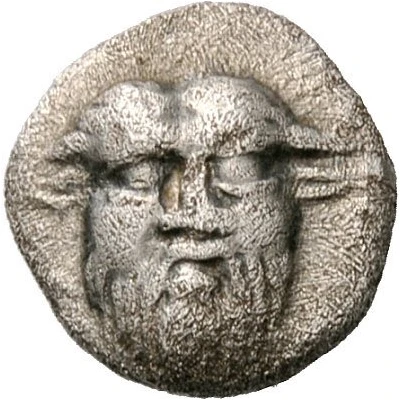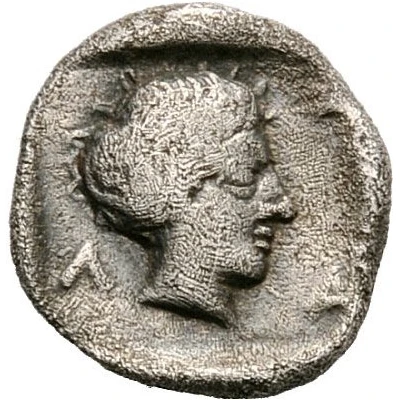


© Nomos AG
Trihemiobol 356 BC - 342 BC
| Silver | 1.11 g | - |
| Issuer | Larissa (Thessaly) |
|---|---|
| Type | Standard circulation coin |
| Years | 356 BC - 342 BC |
| Value | Trihemiobol (¼) |
| Currency | Drachm |
| Composition | Silver |
| Weight | 1.11 g |
| Shape | Round (irregular) |
| Technique | Hammered |
| Demonetized | Yes |
| Updated | 2024-10-10 |
| Numista | N#171040 |
|---|---|
| Rarity index | 100% |
Reverse
Half-length and bearded bust of Asklepios to right, drapery over his left shoulder and around his waist, his left hand raised, holding a sickle
Script: Greek
Lettering: ΛΑΡΙ
Comment
Apparently unpublished.
Interesting fact
The Trihemiobol coin from Larissa (Thessaly) was used as a form of currency in ancient Greece during the 4th century BC. Its name "Trihemiobol" comes from the Greek words "tri", meaning three, and "hemiobol", meaning a half-obol, which refers to the coin's value being equal to three half-obols. Despite its small value, the Trihemiobol was widely used in trade and commerce throughout ancient Greece, and its design and minting process were highly standardized, making it a significant example of early coinage in the region.



